
This one's been getting some attention lately, so we figured we'd give it the once-over as a "jumping on the bandwagon" thing rather than a "months later after everyone's moved on here we are, looking clueless" thing. We gave this comic a little coverage some years back, but we think it deserves more than our previous drive-by, and we're sure you'll agree.
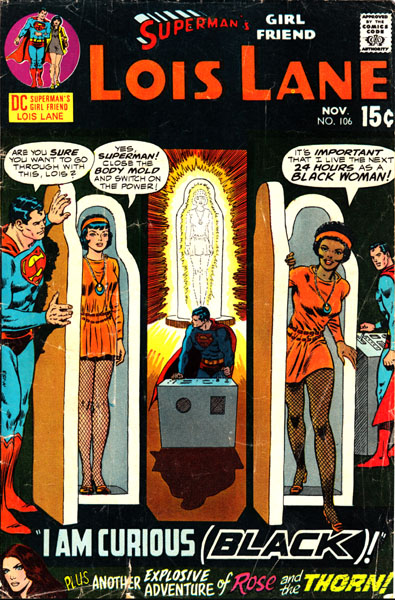
What's this? Lily-white Lois Lane transformed into a soul sister courtesy Superman's Plot Device - sorry, "body mold"? Well, it sure looks like it, in a story DC decided to name after a then-controversial-but-now-seems-quaint-and-tedious film. The only way this cover could be more dated would be if Lois was wearing some sort of ridiculous mini-skirt, medallion, and fishnet hose outfit! Oh wait.
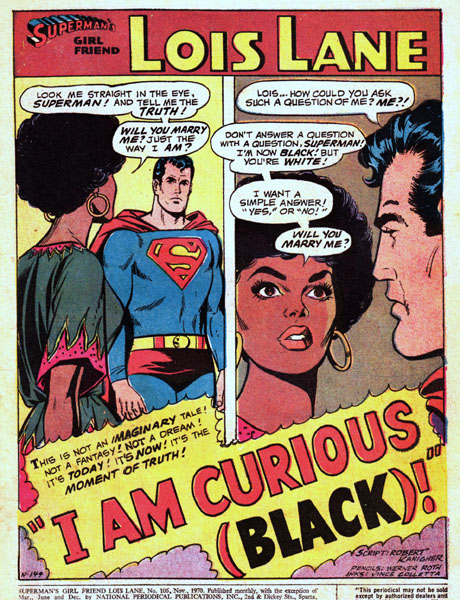
"Not an imaginary tale"! Not any more so than any OTHER Superman comic, that is. In fact here we see Lois bugging Superman to marry her, which has happened, let's see, this is Lois Lane #106, so it must have happened two or three hundred times already. But seriously though, this is an important and topical exploration of the real problems facing young black women, as written and drawn by, let's see, three old white guys.
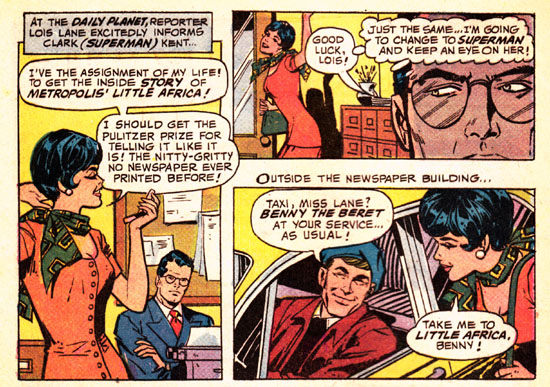
Lois needs the inside story of Metropolis's ghetto, "Little Africa"? Well Lois, after the Civil War and the imposition of Jim Crow laws in the South after the failure of Reconstruction, black families moved to the big industrial cities of the North in large numbers, and... oh wait, you're not even going to do basic research? You're just going to go there and start asking questions? Well OK then.
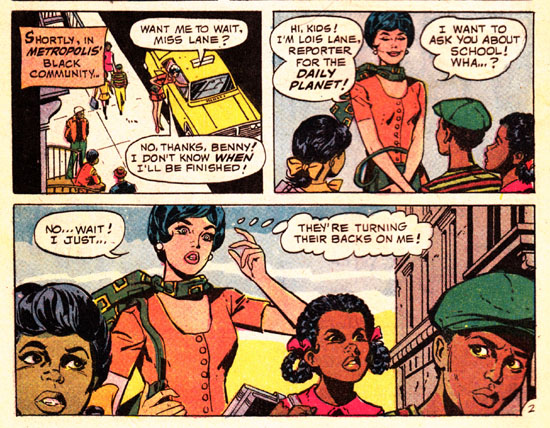
Once in Harlem - sorry, "Little Africa", Lois is a figure of fear and disgust for the neighborhood children. Why is that? Well, duh, didn't your mom tell you not to talk to strangers? Though I agree with Lois that the best way to get the inside story on a school is not to interview the teachers or the administrators, but the children, which are an important source of that juicy playground gossip.
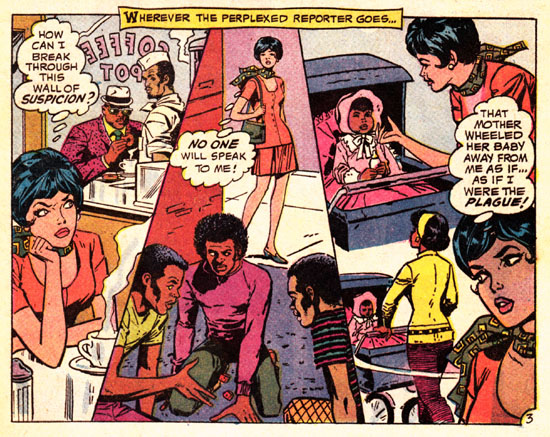
Wherever the perplexed reporter goes, she's ignored by the locals. Not one passerby has quoted the Velvet Underground and asked her what she's doing uptown! Surely at least one person would have offered to sell her jewelry, wristwatches, or heroin, or engaged her in a spirited game of three-card monte.
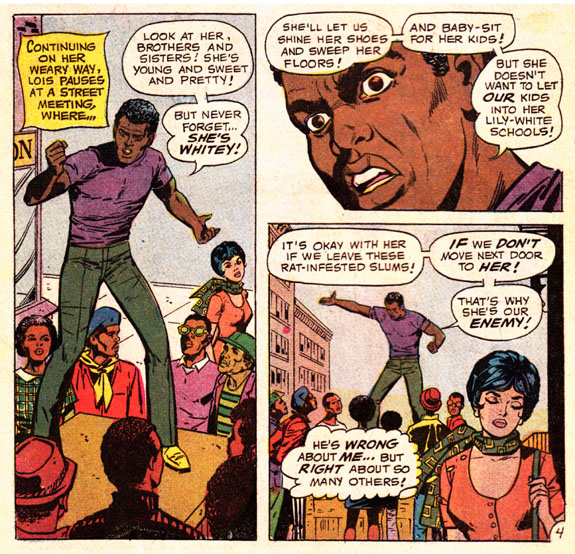
Soon enough Lois comes across a street meeting, which in Little Africa means a guy standing on a box waiting for a white woman to pass by so he can use her as an example.
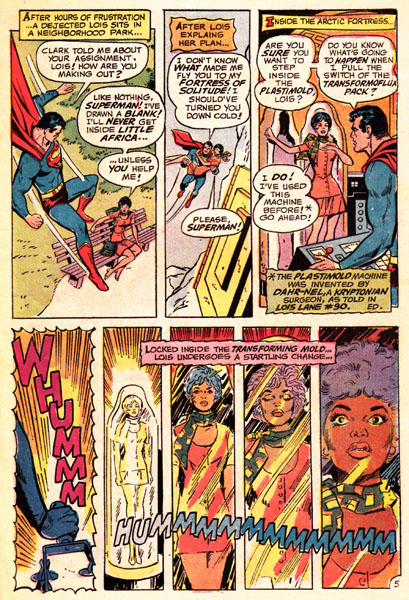
Hey Lois, I know you're frustrated, but why not talk to civic leaders, teachers, social workers, city councilmen, do some research in the... no, forget it. Just go ahead and get in the Plasti-Mold and have Superman pull the Transformoflux Pack switch and turn you into a black woman.
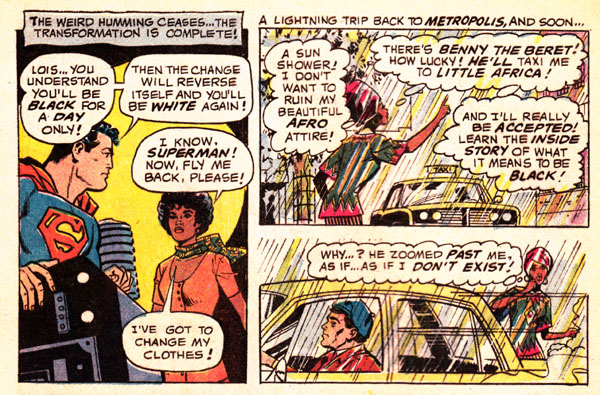
And just like that, Lois is now ethnic, and as such joins Hollywood celebrities like Yaphet Kotto in never, ever being able to get a cab, ever, even decades later. Seriously, it's like that. Cab drivers are enemies of civilization.

Lois, everybody is staring at you BECAUSE YOUR OUTFIT IS HIDEOUS. Not because of your skin color.

Back in Little Africa, Lois gains entry into the actual homes of ghetto dwellers and is so overcome by their terrible living conditions that she can't remember what she's there for or why she went through all the trouble with the Plasti-Mold Transformoflux Pack. Sometimes I think she's not a very good reporter.
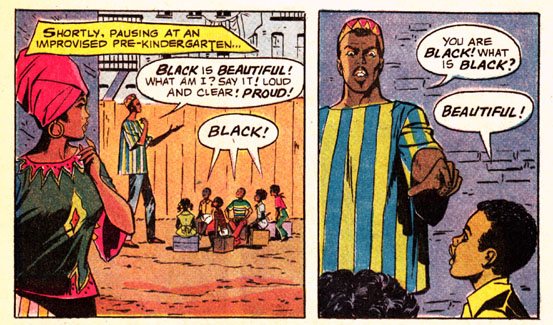
"Improvised Pre-Kindergarten"; a polite way of saying "vacant lot and some crates."
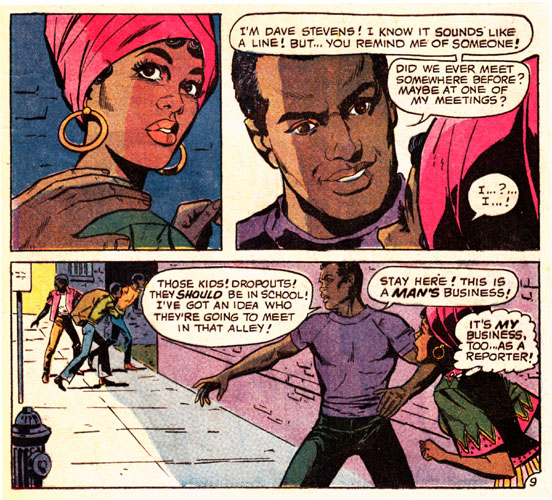
Suddenly Lois meets up with the hunky Negro firebrand that singled her out in her pre-black condition, and Lois learns that today she is up against both racism AND sexism. One at a time, Lois, one at a time.
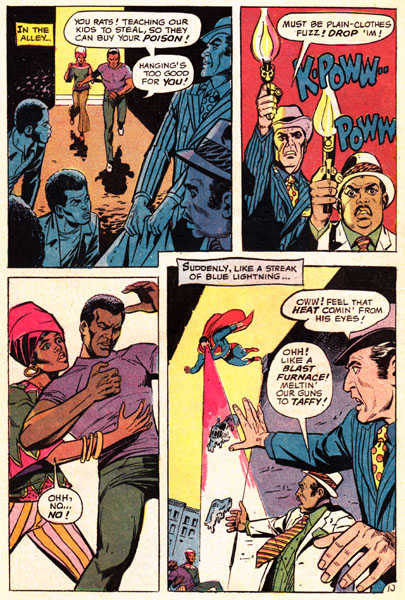
Superman arrives like a streak of blue, too-slow-to-save-the-brother lightning!
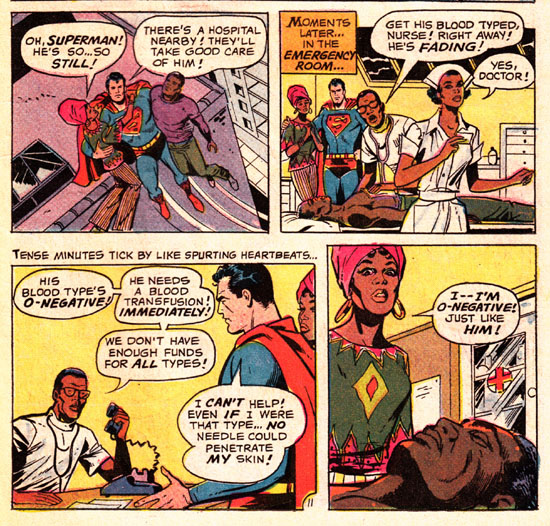
Honestly, I think it would be pretty cool if they whipped up, I dunno, a Kryptonite needle or something, and Dave "Rocketeer" Stevens here got a transfusion of Superman's blood. Then maybe DC would have a black super hero. But no, we're still seven years away from Black Lightning.
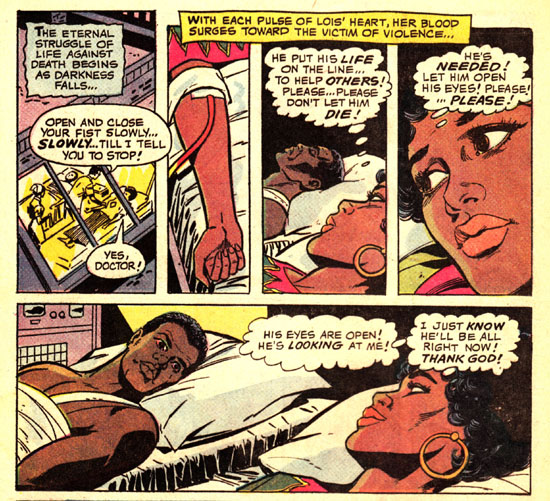
And yes, this comic is totally going to use the cliche of one character saving the life of another character via blood transfusion, even though they're of different races, forcing the one character that didn't like the racial background of the other character to re-evaluate everything he ever thought about skin color and the privileges or disadvantages thereof. I believe Jack Kirby handled it more effectively in 1964's SGT FURY #6, myself.
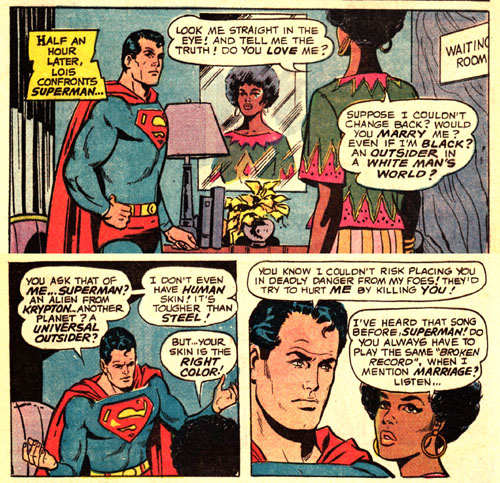
Oh, I get it now, this whole thing was Lois trying to find out if Superman prefers black women. No Lois, he won't marry you when you're black, or white, or old, or a witch, or fat, or a teenager, or invisible, or evil, or married to Lex Luthor. HE WON'T MARRY YOU. What part of "no" don't you understand??
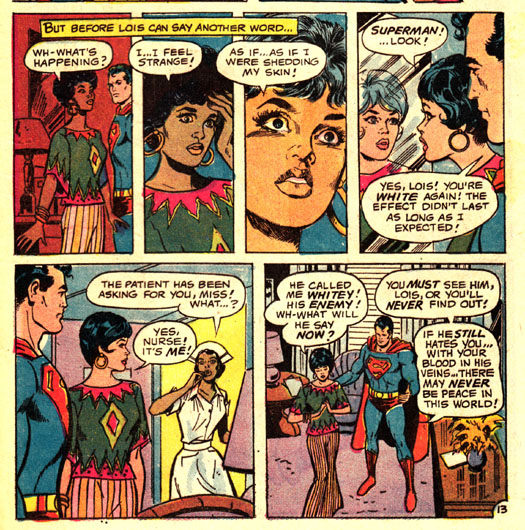
Here Lois proves the old saying "Once you go black, you never go back, until six or seven hours later."
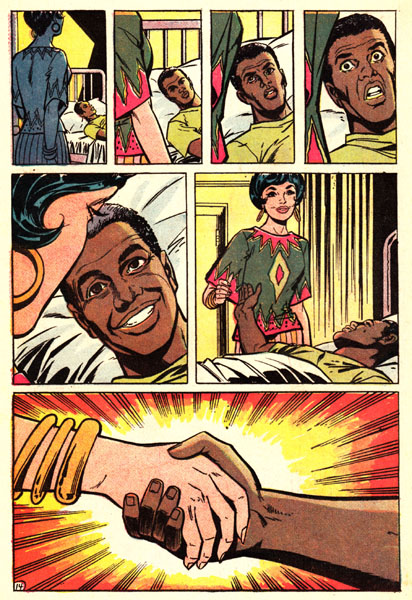
And post-surgical racial harmony comes to Little Africa, as only a privileged white woman who turned into a black woman with the help of Superman can deliver it. This story was a turning point not only for Lois Lane, but for the hiring practices of DC Comics. Since the publication of this groundbreaking tale, the composition of DC's staff has changed from being mostly white males and today, forty years later, they can look with pride at their staff, which is... still mostly white males. Never give up that struggle for equality, DC Comics!
PREVIOUS STUPID COMICS
NEXT STUPID COMICS
BACK TO STUPID COMICS INDEX
BACK TO MAIN INDEX



















